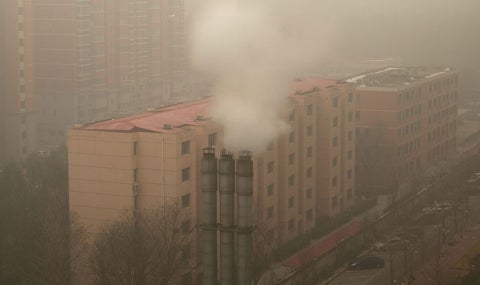Note: Yale School of the Environment (YSE) was formerly known as the Yale School of Forestry & Environmental Studies (F&ES). News articles and events posted prior to July 1, 2020 refer to the School's name at that time.

Scientists have always suspected that aerosol particles, or haze, played a role in amplifying UHI, said Xuhui Lee, the Sara Shallenberger Brown Professor of Meteorology at the Yale School of Forestry & Environmental Studies [F&ES] and senior author of the study. Now, they have evidence that in China — unlike the U.S. — haze is a significant driver of UHI.
The study also highlights the paradoxical nature of haze, and the challenges scientists face in isolating its effects on climate change. Smaller aerosol particles that pose public health risks such as asthma actually cool surfaces and reduce UHI by blocking sunlight. But larger aerosol particles radiate heat in the form of long-wave radiation, thus increasing local temperatures.
“When people talk about aerosols, particle size matters a lot,” Lee said.
When people talk about aerosols, particle size matters a lot.
Previous research by Lee and his colleagues showed that UHI in the U.S. and Canada appears to be driven by a lack of vegetation, especially trees, which are highly effective in dissipating heat through convection. But when they attempted to replicate their experiment in China, the model performed poorly.
At first they thought it was due to the structure of Chinese cities, where there is more vertical stacking as opposed to the sprawling nature of cities in the U.S. Instead, they found a strong correlation between the amount of haze and an increase in heat: cities with more haze pollution had an amplified urban heat island effect.
Even more surprising, they found the greatest UHI in midwestern and northwestern small to mid-sized cities, not in the massive cities located along China’s east coast.
China’s semiarid midwestern and northwestern cities have more large aerosol particles due to road dust and coal combustion that create a thick haze layer and result in a net warming of about one-degree Celsius. Lee even speculates that stir-fry cooking contributes to the UHI.
The study also reveals the ways in which local factors can affect the spatial patterning of UHI. For example, although many parts of the U.S. have air pollution problems that affect respiratory health, researchers couldn’t find a correlation between UHI and haze in the U.S., possibly because aerosol particles here are too small to create a warming effect. Here, the highest UHI is found in wet climates — especially southeastern cities such as Atlanta — posing public health risks and management challenges for city administrators in the face of climate change.
Cleaning up has a co-benefit. It helps improve human health, but it also helps to cool the local climate.
Second, researchers must improve the ability of models to quantify the effects of aerosols on climate change. According to Lee, most climate models don’t actually calculate the long-wave radiation at the ground, or heat, produced by haze pollution. Other models only measure land surface properties, such as the effects of removing vegetation on local climate.
“That’s one of the frontiers in climate change prediction,” Lee says. “There’s a whole gap in our theory and methodology, so we tried to quantify that, not just to describe with empirical evidence. We tried to propose a framework to close this knowledge gap.”
Chang Cao, the first author of the study, is a visiting doctoral student at Yale from Nanjing University of Information, Science and Technology, Nanjing China.